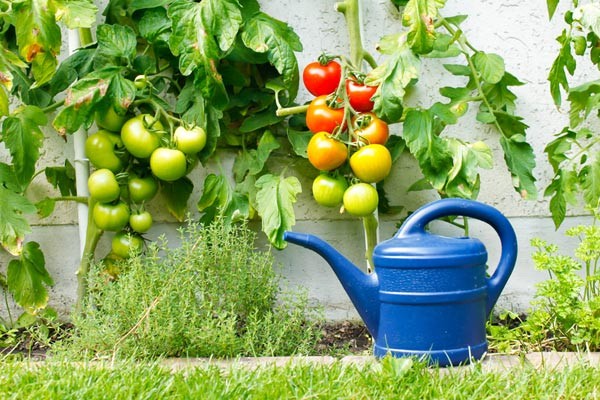
Tomato Growing Tips
A guide on how to grow tomatoes, that are healthy and flavourful.
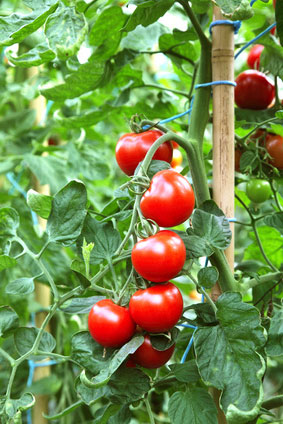 We all love to have our self-grown tasty tomatoes, but they do have their quirks. To make it easier to grow healthy and prolific plants, you will find some care tips in the following:
We all love to have our self-grown tasty tomatoes, but they do have their quirks. To make it easier to grow healthy and prolific plants, you will find some care tips in the following:
Tomatoes like it warm and sunny
Tomatoes are very sensitive to frost, so most gardeners wait to plant the young plants until after the last date of night frost (about mid-May). Until then, you should leave the seedlings on the window sill or in the cellar or winter garden. For a robust growth, you can put them outside for a few hours during daytime, if the temperture is high enough.
After that, the tomatoes feel most comfortable in a sunny and warm place, best protected against wind and rain, e.g. close to a south-facing wall or protected by hedges. 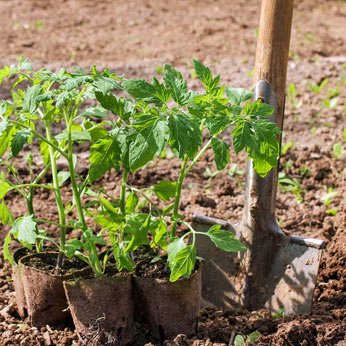
Tomatoes are high nutrient-demanding plants
Befor putting the young plants into the garden, prepare the soil and till in a good amount of compost or organic matter. Later, regular fertilization is advisable as tomatoes grow rapidly and require a great amount of nutrients, especially potassium. Fertilizing ensures a strong and resistant grwoth as well as a rich harvest. Our organic fertilizer is specially adapted to the needs of chili and tomato plants. However, you can also use self-made plant soups from legwell or nettle plants as fertilizer as well as compost or horn chips. An optimal nutrient supply is shown in dark green leaves and stable growth. A lack of nutrients is usually seen in a yellowing of the leaves (chlorosis).
Stabilization
Indeterminate tomatoes dont stop growing, and produce a lot of suckers from the main stem of the plant. Those varieties need staking, and you can already use stake right from the start. Determinate tomatoes grow bushy and dont need staking. Leave enough space for the plants to grow, with a maximum of 2.5 plants per square meter.
Tomatoes and rain 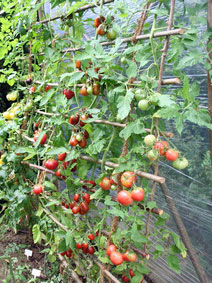 As rainy and cool weather promotes various diseases, you may protect your tomato plants from rain, especially during rainy summers. You can use a simple plastic tarp for covering from rainfall. Some build a greenhouse, plastic growhouse or permanent cover. Indicidual plants can also be protected with a tomato hood.
As rainy and cool weather promotes various diseases, you may protect your tomato plants from rain, especially during rainy summers. You can use a simple plastic tarp for covering from rainfall. Some build a greenhouse, plastic growhouse or permanent cover. Indicidual plants can also be protected with a tomato hood.
It is important to leave enough space between the plants, so that air circulation is possible and the leaves do not stay wet too long. Also the removal of the lower, bottom-near leaves helps a better air circulation.
Watering
When watering, always keep the water towards the base of the plant, and try and keep the leaves dry. Tomatoes can become infected when airborne spores land on wet plants, so never use an overhead sprinkler.
Water regularly but allow the soil to dry a bit between waterings. You want tomatoes to have a regular available water source without keeping them soggy.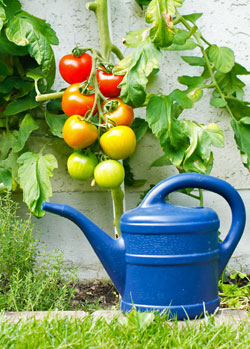
Pinching out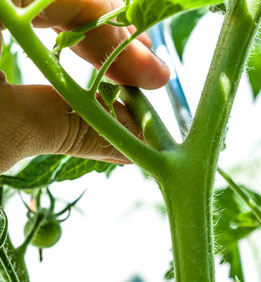 In order to obtain a really rich tomato harvest, gardeners prune tomatoes by pinching out suckers of the leafy shoots that grow from leaf axils (not necessary with determinate types). The suckers are removed, so that the plant can put all its power into the main shoots. If left on the plant, suckers will keep growing and usually produce fruits, but only small ones. In addition, the shoot tip of the plant is shortened approximately to the 5th inflorescence. In the case of varieties with large fruits, you should also shorten the lateral shoots to prevent the danger of breaking down under too great a fruit load.
In order to obtain a really rich tomato harvest, gardeners prune tomatoes by pinching out suckers of the leafy shoots that grow from leaf axils (not necessary with determinate types). The suckers are removed, so that the plant can put all its power into the main shoots. If left on the plant, suckers will keep growing and usually produce fruits, but only small ones. In addition, the shoot tip of the plant is shortened approximately to the 5th inflorescence. In the case of varieties with large fruits, you should also shorten the lateral shoots to prevent the danger of breaking down under too great a fruit load.
The pinched out suckers can be laid down on the soil and used as a fertilizer.
Pollination trick
While tomato flowers are typically wind pollinated, and occasionally by bees, the lack of air movement or low insect numbers can inhibit the natural pollination process. In these situations, you may need to hand pollinate tomatoes to ensure pollination takes place so your tomato plants bear fruit. Gardeners often use a simple battery-operated toothbrush - the vibrations cause the flowers to release pollen. Simply place the vibrating device (toothbrush) just behind the open flowers and gently blow on or shake the plant to distribute the pollen. You may also achieve results by giving the vine a little vibrating at the stake instead.
. 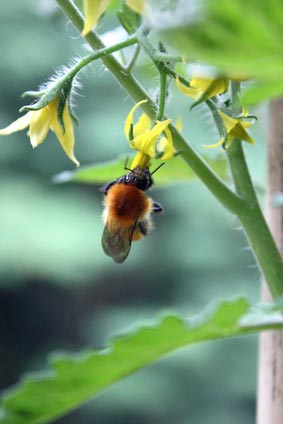 .
.
Late summer season
When the summer season ends and the first cold nights appear, you should take care that the plants can give their full power into the remaining fruits. Therefore, you should remove new shoots and flowers. YIf in fall there are still several green or partially ripe tomatoes on your vines, pick them and put them in a warm, dark spot and cover them with a single sheet of newspaper. Light at this point is not necessary any longer. You can also speed up the ripening by adding an apple.











